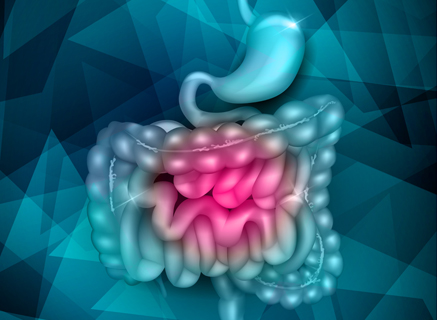What are the signs and symptoms of carcinoid syndrome?
Carcinoids are slow-growing, and many persons with these tumors have no symptoms. The primary tumor may cause intestinal obstruction, characterized by painful cramps in the middle of the abdomen, vomiting, abdominal swelling and weight loss.
In a few cases, carcinoid cells spread to other body parts and produce secondary, hormone-producing (serotonin) tumors. Heavy exercise, alcohol consumption, or eating bananas, tomatoes, plums, avocados, pineapple or walnuts may trigger symptoms of these secondary tumors. These symptoms include:
- Flushed skin on the head and neck.
- Watery eyes.
- Diarrhea with abdominal cramps.
- Respiratory symptoms similar to asthma.
- Congestive heart failure.
- Irregular heartbeat.
- Nausea and vomiting.
- Low blood pressure.
- Unexplained weight loss.
What causes carcinoid syndrome?
As of now the exact causes of carcinoid syndrome are unknown. However, we do know that the factors the increase risk of getting carcinoid syndrome are:
- Adults over 60.
- Obesity.
- Smoking.
- Excess alcohol consumption.
What happens once carcinoid syndrome is diagnosed?
At this time, carcinoid syndrome cannot be prevented. This condition is currently considered incurable. However, symptoms can be relieved or controlled, and survival is possible for 10 to 20 years. Scientific research into causes and treatment continues, so there is hope for increasingly effective treatment and cure.
What can be done to correct the problem?
First steps would be to diagnose the problem. This is done through various tests. Diagnostic studies may include:
- Laboratory urine studies for 5-hydroxyindoleacetic and serotonin level
- X-rays of the abdominal organs
- sigmoidoscopy
- CT scan of the abdomen
Treatment will be dependent on the extent of the disease. Surgical removal of the tumor if possible. In some cases, treatment can be given via medications as listed below:
- Antidiarrheal drugs.
- Anticancer drugs to kill malignant cells.
- Methyldopa to prevent formation of serotonins.
- Phenothiazines to prevent flushed skin.
- Cortisone drugs to reduce inflammation anywhere in the body.
Recommendations for activity are to resume your normal activities as soon as symptoms improve, but avoid strenuous exercise.
Recommendations for diet include at least 2 protein servings a day.
- Take niacin supplements if recommended.
- Avoid foods that trigger symptoms of secondary tumors.
- Don’t drink alcohol.
When to seek medical help
You should plan to contact your doctor if:
- You or a family member has symptoms of carcinoid syndrome.
- Symptoms become disabling, despite treatment.
- New, unexplained symptoms develop. Drugs used in treatment may produce side effects.
